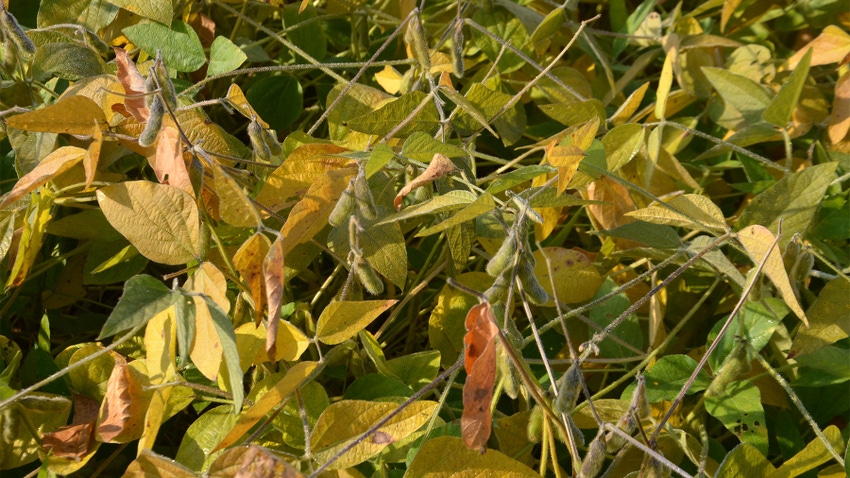July 26, 2023

Are there reasons to use a desiccant to dry up soybeans to harvest earlier? Beans seem dry and ready to harvest while stems are still somewhat green. How do I handle that situation?
The Indiana certified crop advisers panel answering this question includes Steve Gauck, regional agronomy manager for Beck’s, Greensburg; Bryan Overstreet, Conservation Cropping Systems Initiative agronomist, Valparaiso; and Dan Ritter, central region agronomist, Dairyland Seed.
Gauck: As we continue to improve soybean health, soybeans stay green longer. A killing frost also seems to be a little later than in the past, so soybean harvest is delayed. Desiccants in soybeans is not a new practice. They have been used in the South for years. Monitoring seed development is critical to make sure you spray at the right time. Desiccation needs to be done once soybeans reach maturity stage 6.5. Early applications can cause yield loss, and late applications don’t gain anything.
This is still a very new practice in Indiana. Many companies are testing the process this growing season to see what benefits there are. If you have a situation where green-stemmed soybeans are causing major harvest delays, visit with your agronomist about a plan to help.
Overstreet: The actual cause of green stems is not known, but it is usually associated with stress the plant goes through. I would not generally spend money on a desiccant. If plants still have many leaves hanging on, then a desiccant might help in harvest. I would harvest the field when the beans are dry in the pod. If you wait until all stems are brown, you will lose part of your crop to pods opening up in the field when too dry. If you can cut at an angle, it seems to help with feeding green stems through the header.
Ritter: Dairyland Seed conducted three years of trials evaluating strategies for early soybean harvest. Results indicated a slight yield advantage for desiccating soybeans in the late R stages of development. This practice covered the cost of application and product, and depending on the year, a little extra. Why, then, should you consider a desiccant at a breakeven cost? First, it can add seven to 10 days to the harvest window, which can benefit you with additional time for other projects such as early contracts, tiling jobs, manure applications and cover crop seeding.
However, the greatest advantage is more flexibility in harvest timing and doing so at the proper moisture levels. After the desiccant application, you could start a week earlier to harvest beans before they’re all at 9% to 10% moisture, as happens in some years. Then, it simply gives you an extra seven to 10 harvest days at no significant penalty.
Green stems can also be a good reason to use a desiccant. The challenge is that if beans are ready, you used a desiccant to dry stems, and you follow the preharvest interval, have you gained time? The key to answering that would be to recognize green stem syndrome soon enough to make an early application. Other options with green stem syndrome would be waiting for frost, slowing harvest speed or harvesting corn until bean stems have died.
Read more about:
Dry DownYou May Also Like




